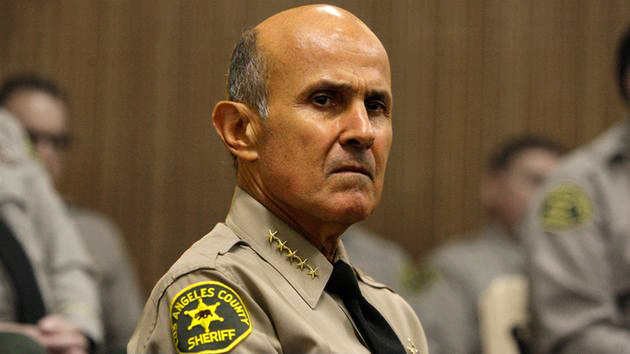The on again, off again initiative toward bulldozing this municipal black site might finally be realized.
In 2014, when the LA County Board of Supervisors turned their attention back to the city’s contemptible Men’s Central Jail (MCJ), demolishing it was a given. A civic corner had been turned, taking all plans to update and expand the existing structure off the table. There could be no escaping the curse of a bloodthirsty culture of deputy-on-inmate violence that lived deep in the building’s bones: the miserable concrete labyrinth had to come down.
Yawn.
The lockup built in 1962, and often referred to as “the old side,” continues to rot in place. Former Sheriff Lee Baca has since been convicted, but the facility itself is still overseen by the Custody Operations Division as atrociously as ever. Equally troubled Alex Villanueva likely runs it with as much “Us vs. Them” spite than during my own 10-month stay as a pre-trial prisoner under then-Sheriff Sherman Block (at the time America’s highest paid public official).
But as Americans rethink their positions on criminal justice, LA’s Men’s Central Jail should be seen as both worst-case and day zero.
First, the worst.
Secrecy has long permeated the ranks of LA Sheriff’s Brass and enshrouds MCJ. It’s such an organizationally controlled fortress, only touring an aircraft carrier can compare. Murals, tributes, trophy cases, banners, badges, and memorials force feed visitors law enforcement martyrdom to the point where one can’t sense how much it’s all spinning until reunited with fresh air and sunlight.
The Department has managed for decades a kind of denial sleight-of-hand involving its budgets, bad apples, excessive force settlements, corruption scandals, secret deputy gangs, and a conveyor belt of civil rights violations and allegations of misconduct. There’s always an excuse as to why it’s “not the right time” to close MCJ’s old side, hold the LASD accountable, or discuss ways to reduce corruption, even as 539 of 606 lawsuits against the city in fiscal year 2018-19 were filed against the Sheriff’s Department alone. (And to the tune of $81.5 million). In the end, this shell game of postures and pushback has prolonged the life of their beloved Men’s Central Fight Club.

• Department Leaders had a lax attitude towards deputy aggression and discouraged deputy discipline
• Department was aware of deputy cliques present at MCJ and known to high level management as far back as 2004
• The Sheriff allowed his Undersheriff and Assistant Sheriff to run the Custody Division without effective oversight
• Deputies Have Enabled Inmates to Use Force Against Other Inmates
• Witnesses have told the Commission that deputies enabled inmates to attack other rival inmates by opening the doors to several cells at once, which inmates refer to as “racking the gates.”
• The Commission also heard about deputies who have intentionally placed inmates in dangerous situations, such as placing high-security inmates in the general population and announcing their crimes to the other inmates.
In the current climate, the future for reform looks a bit brighter. Still, it’s unclear what will actually become of MCJ. Zócalo’s Joe Matthews makes a case for keeping the old dungeon around, perhaps as a museum of mass incarceration or a center for democratic principles in action. “To tear down Men’s Central Jail would be to risk forgetting what the place has meant, and to miss a historic opportunity to turn this torture chamber into a vital center for California’s future,” he writes. Conversely, there is an optimistic view among many Angelenos that the very act of destroying MCJ could usher in a new era of transparency for the historically corrupt Sheriff’s Department. Perhaps by reclaiming the vital downtown real estate MCJ occupies, the thinking goes, the LASD can be shaken of its worst impulses and elements, allowing its more reform-hungry and youthful professionals to elbow their way to the fore.
At minimum, the County Supervisors voted last year to cancel a $1.7 billion expansion of the facility into a Supermax on steroids. That little project–– now thankfully also off the table–– was being referred to as the “mental health jail” (talk about a jinx). Sights are now set on a sprawling campus of support housing, drug diversion and reentry programing, and the critical mental health and addiction recovery services that would comprise a true Restorative Justice Village.
Phase One was approved in September and includes the Vignes Project, aka “Hope Village,” a predominantly CARES Act-funded $48-million bridge housing facility artfully made of shipping containers. Planned for rapid construction in MCJ’s industrial backyard, the idea is to begin diverting the city’s growing homeless population away from incarceration, where it’s 60-100% more expensive to detain those with mental health or substance use disorders. A second Chinatown property once intended for MCJ parking is also slated for an affordable or supportive housing development. As part of the LA Board of Supervisors’ new “care first, jail last” policy, Hope Village may someday swallow the LASD complex altogether.
So could MCJ, the “The Abu Ghraib of Los Angeles,” home of the heroin burrito, be swapped out for a recovery university and support shelter?
Ha! It’s better than the idea I had back in 2014, when I proposed that the whole karmic Superfund site be turned into a mall. Hey, I’m optimistic too, but with how little we thought of criminal justice reform, disenfranchised and forgotten citizens, immigrants, and any further legwork to achieve racial justice, a custody-themed Cellblock Shopping Town is what I thought we deserved.
It still will be if we ––and the Los Angeles County Board of Supervisors–– let this chance to turn a corner pass us by.
For a historical perspective on the LASD’s excessive use-of-force in its jails and failure to discipline rogue officers, check out: L.A. County Sheriff’s Department: A Report by Special Counsel James G. Kolts & staff, 1992 –– and this Los Angeles Times Story Gallery
.









